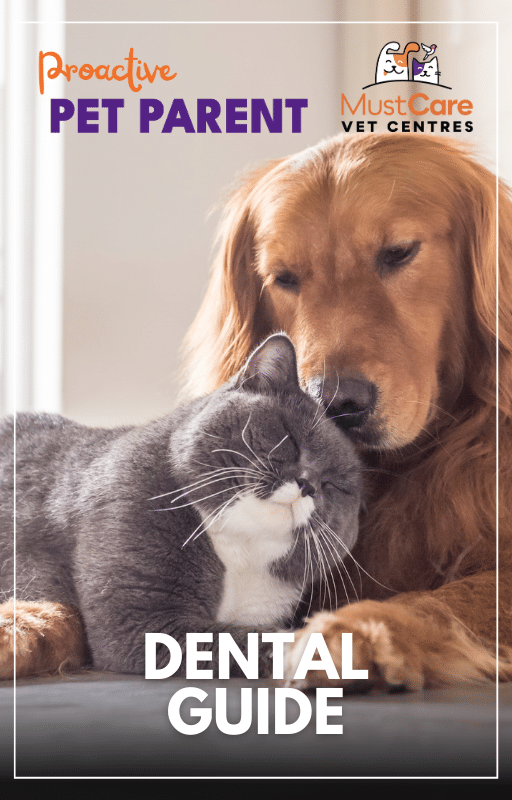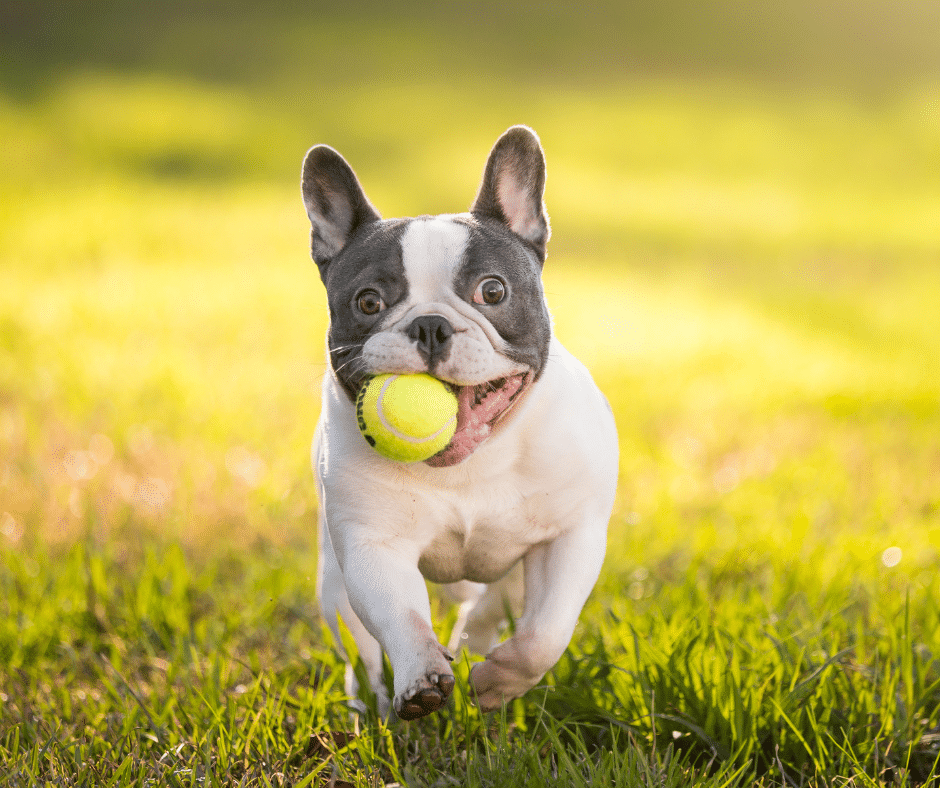Share This Blog With Other Pet Parents!
Safe Pets & Gardens: Toxic Plants in Queensland Guide
Many common plants, seemingly harmless, hold toxins that could endanger the health and safety of our pets. Our guide, “Safe Pets & Gardens: Toxic Plants in Queensland,” is an essential read for every pet parent. Here, you’ll unearth vital information about the most common toxic plants found across Queensland, coupled with practical advice for cultivating a pet-safe garden. Whether you’re a seasoned gardener or a new pet owner, understanding which plants pose a risk is crucial in safeguarding the well-being of your animal companions.
What you’ll learn from this blog:

For all you need to know, download our
FREE Dental Guide
This blog is part of our Proactive Pet Parent series! This is just the beginning… To see more blogs, click here! Better yet, sign-up to our newsletter to receive these directly to your inbox each month.
Sign-up To The Proactive Pet Parent Newsletter
The presence of plants can be aesthetically pleasing, but also harmful for our pets. This guide aims to shed light on the common toxic plants found in Queensland, highlighting the need for pet-safe gardening practices. By doing so, we provide an environment where our pets can explore safely, and we, as pet owners, can enjoy the tranquillity of our gardens with peace of mind.
Understanding Toxic Plants
To fully grasp the risks that some plants pose to pets, it’s crucial to understand what makes these plants toxic. The natural world is filled with an array of defence mechanisms, and for certain plants, toxins are their shield against predators. These toxins, while part of a plant’s survival strategy, can have adverse effects on pets if ingested. The type of toxin varies from plant to plant, each with its unique impact on animal health. Some toxins cause mild irritation, while others can lead to severe health issues or even be fatal.
Pet owners should be aware of the common symptoms of plant poisoning in animals. These include:
- Vomiting
- Diarrhoea
- Excessive drooling
- Lethargy
- Changes in appetite
- Tremors
- Seizures
- Difficulty breathing
It’s important to remember that symptoms can vary based on the type of plant ingested and the amount consumed. Some pets may show immediate signs of distress, while in others, symptoms may develop more slowly.
Knowledge of these symptoms is vital. Early detection can be the difference between a quick recovery and a medical emergency. While not all plants are harmful, and not every pet will react the same way, being informed is a proactive step in ensuring the safety of our pets.
Identifying Common Toxic Plants in Queensland
Recognising the common toxic plants in Queensland is a vital step in protecting our pets. We’ve developed a list of common toxic plants in Queensland, but it is not an extensive list! Among the diverse flora, several species pose risks to animal health. Here are some of the more common toxic plants in Queensland:
- The Oleander, with its alluring pink or white flowers, is a common sight in many Queensland gardens. However, every part of this plant is toxic, containing compounds that can affect a pet’s heart function and potentially lead to fatal consequences.
- Another plant to be wary of is the Sago Palm. Often used in landscaping for its unique appearance, the Sago Palm is highly toxic, especially its seeds. Ingestion can lead to liver failure and other serious health issues in pets.
- Similarly, the Lantana plant, known for its vibrant flowers, is also harmful. Its berries and foliage can cause issues ranging from digestive upset to more severe symptoms like liver damage in pets.
- The Castor Bean plant, although less common, is one of the most poisonous. Its seeds contain ricin, a potent toxin that can cause severe abdominal pain, vomiting, diarrhoea, and even death in pets.
- The Brunfelsia (Yesterday, Today, Tomorrow plant), frequently found in Queensland gardens, can cause seizures and muscle tremors in pets when ingested.
While these are just a few examples, they highlight the importance of plant knowledge in maintaining a pet-safe environment. Understanding what these plants look like and their effects on pets is key to preventing accidental poisoning. Pet owners need to exercise caution in plant choices, ensuring their gardens are not only aesthetically pleasing but also a safe space for their furry companions.
Safe Gardening Practices
Creating a pet-safe garden in Queensland involves thoughtful plant selection and strategic garden layout. The key is to choose plants that are non-toxic to pets and arrange your garden in a way that minimises the risk of accidental ingestion. Begin by researching and selecting plants known to be safe for animals. Consider pet-friendly options like Snapdragons, Petunias, and certain varieties of Ferns and Palms, which add beauty to your garden without posing a risk to your pets. For further information, visit our A-Z guide of non-toxic, pet safe plants.
When designing your garden layout, consider creating a designated area for your pets. This space can include pet-friendly grass, safe plants, and even a small play area. Fencing off certain areas of the garden can also prevent pets from accessing plants that might be harmful. Additionally, raised garden beds or hanging planters can keep toxic plants out of reach.
Regular garden maintenance is crucial. This includes removing any fallen leaves or flowers from toxic plants, as these can still be harmful if ingested by pets. Also, be mindful of the fertilisers and pesticides you use, as these can be toxic. Opt for pet-safe alternatives available in the market.
Finally, it’s important to train your pets. Teaching them to avoid certain areas or not to chew on plants can be a helpful preventive measure. While it takes time and patience, training can significantly reduce the risk of accidental poisoning. By combining these practices, you can enjoy the dual pleasures of gardening and pet ownership in a safe and harmonious environment.
Creating a Pet-Friendly Garden
Pet-friendly gardens are not just about avoiding toxic plants; they are about creating an environment where pets can thrive. Start by selecting plants that are non-toxic and safe for pets. For example, Catnip is not only safe but also loved by cats, while species like Boston Fern and Spider Plants are safe for dogs and add a lush green touch to your garden.
Incorporate elements that cater to your pet’s instincts and behaviours. A small digging area for dogs can prevent them from disturbing your main garden beds. Adding a water feature like a shallow pond or fountain can be a source of entertainment for pets and a beautiful focal point in your garden.
Pathways made of soft materials like mulch or smooth pebbles are gentle on your pet’s paws and can lead them through non-toxic plants, creating a safe exploration path. You can also create shaded areas using safe plants or small structures to provide a cool resting spot for your pets during warmer days.
Additionally, consider the sensory experience of your garden. Plants like Lavender and Chamomile are not only safe but can have a calming effect on pets. The layout of your garden should allow pets to roam freely and safely while keeping the more delicate plants out of their reach. By thoughtfully choosing plants and designing your garden, you create a shared space that is a source of joy and comfort for both you and your pets.
Emergency Response to Pet Poisoning
In the unfortunate event that your pet ingests a toxic plant, prompt and appropriate action is critical. In the event of an emergency ingestion, follow the below steps.
- Remain calm and assess the situation. Look for symptoms like vomiting, diarrhoea, excessive drooling, lethargy, or changes in behaviour. If you suspect poisoning, immediately remove any plant material from your pet’s mouth and keep a sample of the plant for identification.
- Contact your veterinarian or a pet poison control centre. Quick and accurate information about the plant ingested and your pet’s symptoms can make a significant difference in the course of treatment.
- Do not induce vomiting or give any home remedies unless specifically instructed by a professional, as this can sometimes cause more harm.
- If you need to visit a vet, bring the plant sample with you. This will help the veterinarian to quickly identify the toxin and provide the appropriate treatment.
- Act quickly – time is of the essence in these situations, and prompt veterinary care can prevent further health complications and increase the chances of a full recovery for your pet.
Having emergency contact numbers for your veterinarian and a pet poison control center handy can save precious time. It’s also beneficial to have a pet first aid kit at home. Preventing exposure to toxic plants is key, but knowing how to respond to a poisoning emergency is equally important for every pet owner.
By familiarising ourselves with the common toxic plants in our region and their effects, we can make informed decisions about our gardening practices. Opting for pet-safe plants and designing a garden that caters to both the aesthetic and safety needs of our pets is not only possible but rewarding.

